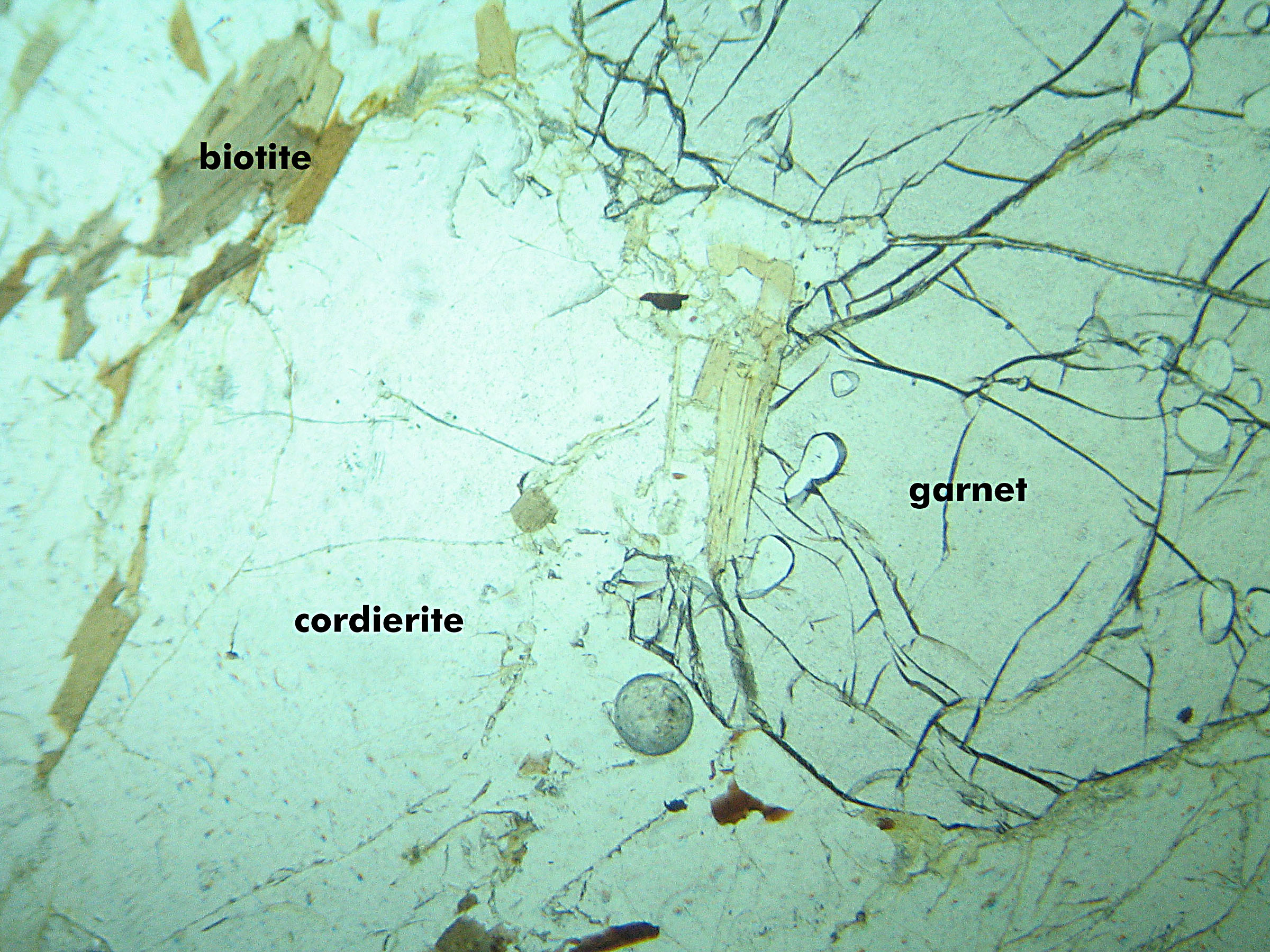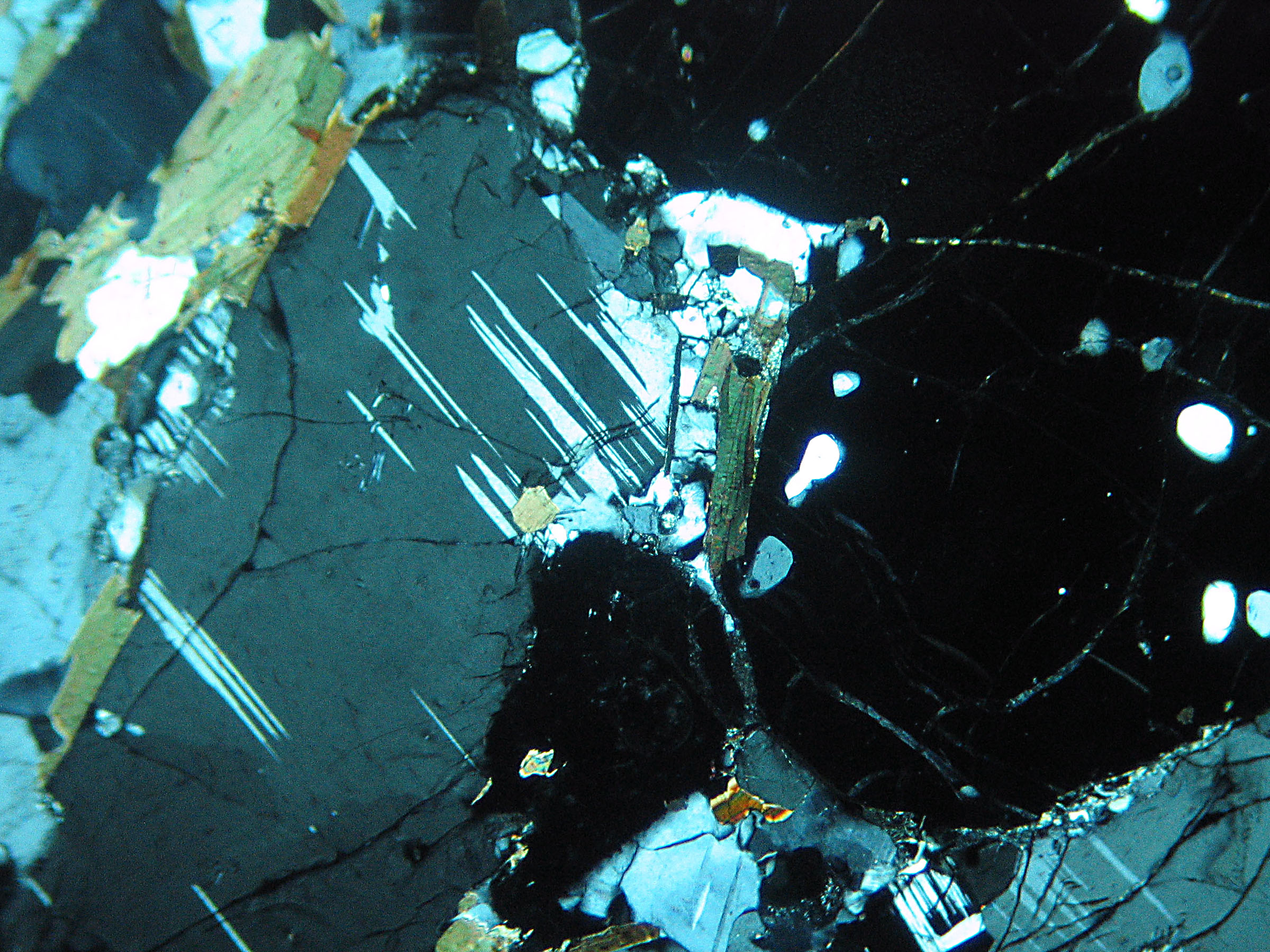Cordierite, Orthopyroxene and Biotite from near Kazabazua, Quebec




The four photos above are of a spectacular
rock from near Kazabazua, Quebec. It contains primarily cordierite
and orthopyroxene with lesser amounts of
biotite. The cordierite is twinned
(and in XP looks a lot like plagioclase)
and contains pleochoric halos around
zircon inclusions. The halos appear as "burn" marks
in PP light. The orthopyroxene is blocky
and fractured, shows high relief (PP),
and has first order interference
colors (XP). It is pleochroic, with
color ranging from light pink to light green. Biotite
is also pleochroic and here exists as
flakes in various shades of brown (PP) and has upper 2nd order
interference colors (XP).




